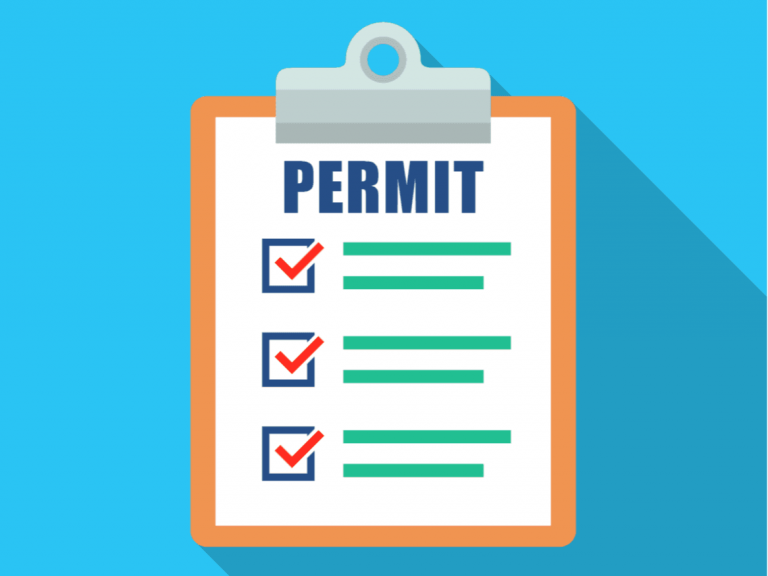To educate people regarding the process of installing solar, we outlined a simple ten-step guide for the typical solar PV installation process. In the previous parts of our blog series, we threw light on the importance of a site survey as well as choosing a credible solar contractor. Here is the fourth part of a five-part series on a personal guide to install solar which focuses on Solar rooftop registration procedures.
Step 7: Receive your Proposal
In evaluating and comparing your solar proposals, here are some of the points that you need to consider:
The size and location of the system
The overall system size is dependent on your electricity usage and the number of panels necessary to fulfil your energy needs. In most situations, the capacity of the solar system is represented in kilowatts (or kW) and should be included in the solar proposal. It should also contain an aerial view of the site with the photovoltaic panels overlaid.
The components (equipment) of the system
Your proposal should contain a list of components. That list could include the solar panel quantity, brand and watts, the inverter quantity and brand, and, details of other components such as mounting structures and cables. Different product warranties may come with each of these items. You must know what each of those warranties includes.
Warranties
Two types of warranties will be provided with most solar proposals:
Product warranty – The warranty on the product covering manufacturing defects and damages.
Performance warranty – The warranty period for which the equipments will function for a defined efficiency levels.
The solar panels and inverters have different warranties and certain warranties can be extended for a longer period as well. More information on installation, warranty and maintenance will be covered in the next instalment of our series, ‘Personal Guide to Installing Solar at Home’.
Service and Maintenance
Your solar contractor should be a permanent, long-term partner for your rooftop solar project. Ask the following questions:

- Does the company have dedicated service teams?
- Are there licensed electricians on staff?
- Is O&M (Operations and maintenance) included in your proposal?
The solar system cost and financial incentives
The proposal should include an incentive and cost summary. It should consist of the following:
- The total cost of the system
- The amount of taxes
- Subsidies for solar rooftop scheme
Finally, the proposal should contain the net cost of the system after the incentives.
The energy offset and environmental impact of the system
An attractive property of solar is that it is a thoughtful financial investment as well as good for the environment. The environmental impact of your solar photovoltaic system should be included in your proposal. For example, it should state the approximate offset of tones of carbon dioxide per year, or the equivalent of barrels of oil per year, or even the amount of saved trees per year.

In the proposal, the scope of the solar project should be specified. What is included and what is not included should be detailed, including provisions for any unexpected expenses or changes. A turnkey solar project will include:
- Design
- Modelling
- Engineering
- Procurement
- Installation
- Warranties
- Mandated safety equipment, interconnection and associated applications
- Permits and Taxes
- Quality assurance
Pay close attention to these points and what is, and what is not included in your solar proposal. Partnering with a solar installer with all these capabilities will spare you money and trouble in the long course. HomeScape provides end-to-end support and committed to finding the apt solutions for all your solar requirements.
The installation timeline
From the moment you sign the proposal to the moment the solar system is up and running, it typically takes a few weeks. On average, the regulatory authorization of the project from the DISCOM takes about eight to ten weeks in total, while the execution of the installation ranges from two to five days depending on the system size during this period.
The payment terms
In the proposal, the payment conditions should be mentioned clearly indicating the milestones during the process. You commit to those payment conditions when you accept the proposal, and you will be required to fulfil those agreements and keep the project on track. The payment timeline is staggered to ensure ease for the homeowner to plan the finances.
Step 8: Documentation and Permits
The owner must fulfil all of the required regulatory requirements before a rooftop solar power system can be installed on a residence. The solar rooftop registration process requires considerable time and energy on a residential scale, depending on the state, local government, type and size of the system. It can be very complicated and cumbersome to deal with.

If you are contemplating whether solar is right for you, don’t let the difficulty of solar proposals or a solar rooftop registration impact the decision to go solar. Luckily, HomeScape makes life easier by dealing with the documentation process for you. Every solar company has a unique proposal of their own. There are, however, some key pieces of data that should be compliant with each proposal you get.
The permit process depends on the following factors:
- Location of the solar plant
- Size of the project
No permits are necessary if you choose to install an off-grid solar photovoltaic system or grid-connected system for self (captive) use. For net-metering and gross-metering systems, permits and approvals are necessary:
- Approval from DISCOM for grid connectivity
- CEIG (Chief electrical inspector to the government of state) approval for the capacity more than 10 KW (This capacity may differ from state to state)
To ensure public safety and system efficiency, the permitting processes for solar photovoltaic systems are essential. Installation of a solar system can require, depending on the jurisdiction:
- Electrical permit
- Building permit
- Zoning approval
- Or a combination of the above
Electrical Permits
Usually, the electrical permits for solar rooftop power plants comprise of three stages:
- Feasibility analysis
- Registration
- Connectivity

You will have to apply to the power distribution company (DISCOM) with an application fee. The DISCOM then determines whether they should permit the connection for the applied capacity. Based on the suggested capacities from the DISCOM, you can proceed with the solar rooftop registration along with necessary documents and registration charges. It can be done by filling out applications at the electricity board or online.
If you are opting for an on-grid system, this step will also include the permits needed for setting up the net-metering facility (if you are eligible for it). After the registration process, a connection agreement will be signed between you and the DISCOM.
The connection agreement should define the financial arrangement for surplus units exported to the grid (in the case of net metering) as well as other specifics. After the solar rooftop power plant installation, the DISCOM executives will test and assess the standard compliance of the plant before sanctioning the project.
Building Permits
You will have to approach the appropriate state-building officer in states where building permits are required. The inspector will check the place, review the plans and grant the on-site construction permit. Mostly, in the case of residential clients, this does not apply. It is needed only if roof modification is required, or for roof-mounted solar systems, but not ground or pole-mounted systems.
Zoning Permits
In most of the areas, an electrical permit is required. In some situations, a building permit is also necessary for solar photovoltaic system installation. But, a few cities have added zoning permits that apply to solar photovoltaic projects. For example, any exterior change to a structure which includes the historical area and main corridors needs a Certificate of Appropriateness after a review by the planning department.
In conclusion, in the fourth article of our five-part blog series, we highlighted the part of the essential steps of installing solar such as receiving your proposal from the solar contractor, solar rooftop registration and documentation. A few main points you will need to look for in your solar proposal include the size, location and equipment of the system, warranties, service and maintenance, financial incentives, energy offset, project scope, installation timeline, as well as the payment terms.
Under permits, we usually have an electrical permit, building permit, zoning approval, or a combination of these. If you are willing to see what solar looks like for your residential property, reach out to HomeScape. We will be able to provide you with a detailed proposal for a rooftop solar project and address any solar rooftop registration related queries you might have.
Read about previous parts of the five-part series:
Part-1 : https://homescape.solar/personal-guide-to-install-solar-at-home-part-1-system-type/
Part-2 : https://homescape.solar/personal-guide-to-install-solar-at-home-part-2-system-type-and-budgeting/



